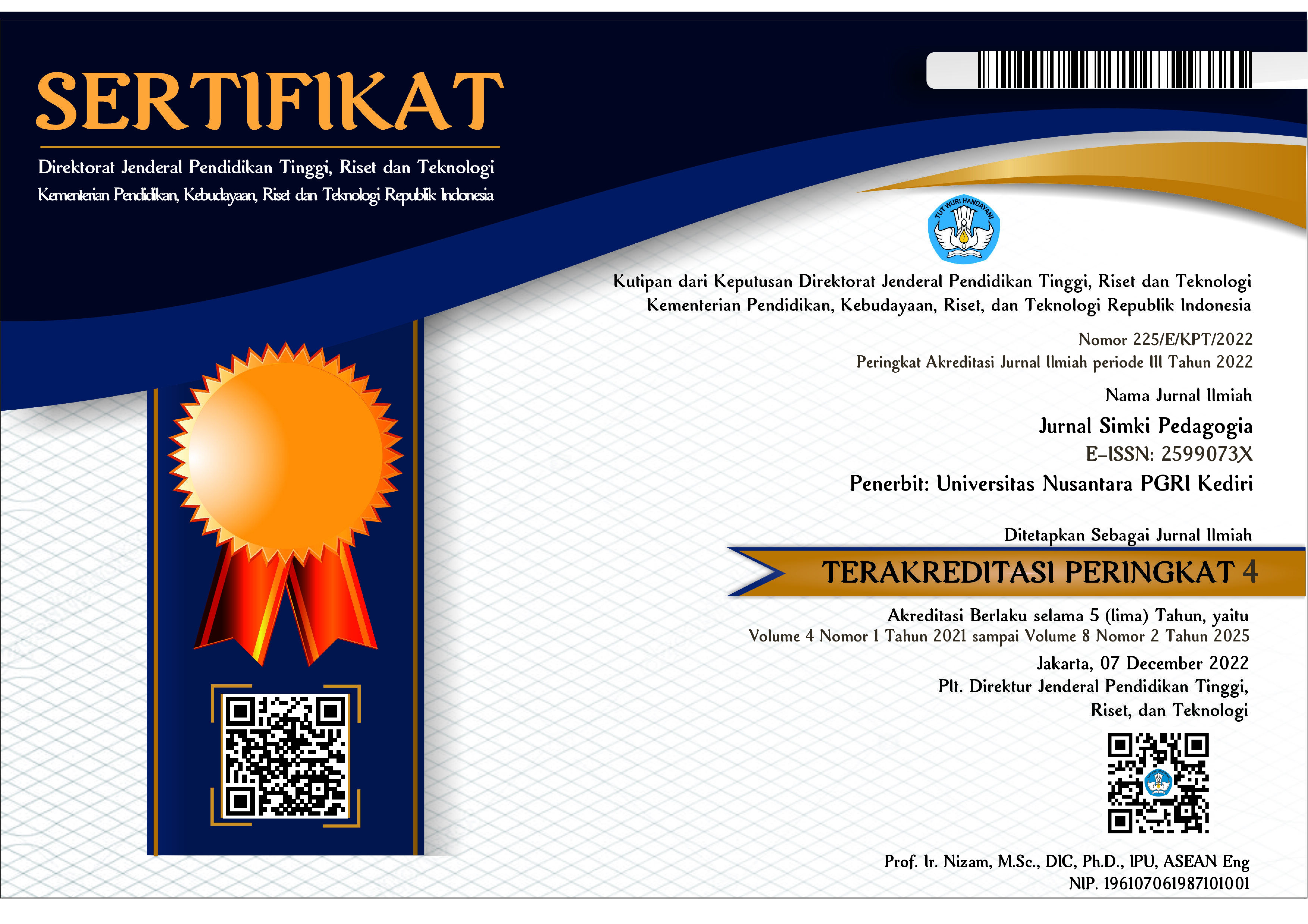THE EFFECT OF BUZZ GROUP TECHNIQUE TO THE SECOND GRADE STUDENTS’ SPEAKING AT MA SEJAHTERA PARE 2017/2018
 Abstract views: 261
,
Abstract views: 261
,
 PDF downloads: 264
PDF downloads: 264
Abstract
Talking about speaking, when people need to good in speaking, they have to involve the five components such as good pronouncation, correct grammar, right vocabulaty, able in fluency and comprehension. But many students in learning English especially in speaking, they got some difficulties. In this study, to overcome the problems of speaking such as, fluency, pronouncation and vocabulary. Using Buzz Group, the writer can solved their problems. Because, Buzz Group is a small group assembled to work on a problem and report solutions. By gathering, the students can share their ideas with others in a group. So, the students can improve their ideas. Therefore, the aim of this research is to find out any effect to the second grade students’ speaking at MA Sejahtera Pare in academic years 2017/2018. This research uses experimetal quatitative with onegroup pre-test and post test as research design. The subject of this research is 20 students that consist of 11 males and 9 females of second grade students’ speaking at MA Sejatera Pare. The data was analyzed by using t-test. The result of data analyzed shows that the mean score of post test ( 84.4 ) is higher that pre-test ( 68.2 ) and t-test ( 26.23 ). Thus, the Ha is accepted and Ho is rejected. Moreover, it shows that the t-score ( 26.23 ) is higher than t-table ( 2.093 ) at the degree of significance 5%. In the effect of very significant. It can be concluded that using Buzz Group Technique gives significant influence towards the students’ speaking especially in fluency, vocabulary and pronouncation. But, there was one component that proven higher than the others. It was fluency.
Downloads
References
Ary, Donal Et All.2010. Introduction to Research In Education Belmont. USA:Wadsworth, Cengage Learning.
Brewer, Ernest. E. (1997). 13Proven Ways to Get Your Message Across.California: Corwin Press, Inc. A sage Publications Comapany.
Brown, H Douglas.2004. Language Assessment: Principles and classroom practice. New York, Inc.
Brown, H.Douglas.2000. Principles of Language Learning and Teaching FourthEdition. San Fransisco : Addison Wesley Longman Inc.
Brown, H. Douglas.2003. Language Assessment: P rinciple and Classroom Practice, (San Francisco, California: Longman.
Brown, Gillian and George Yule 1983. Teaching the Spoken Language. Cambridge: Cambridge University Press.
Brown, H.D. (2001). Teaching by principles. New York:Addison Wesley Longman. In (ed) PROSIDING ICTTE FKIP UNS 2015
Crowl, T. K.1996. Fundamentals of educational research. New York: Brown and Benchmark publisher.
Ernest. E. (1997). 13Proven Ways to Get Your Message Across. California: Corwin Press, Inc. A sage Publications Comapany.
Harmer, J. 2007. How to teach english, Pearson Education Limited.
Harmer, J.2001.Practice of English Language Teaching. Edinburgh Gate:Longman. In Arini.2005.
M.Baily, Kathleen.2005. Practice English Speaking. England: Longman. In
Tri Lestari.English Education Department Faculty Tarbiyah and Teachers Training The State Institute of Islamic Studies Ponorogo IAIN Ponorogo.
McKeachie, W.J. 1994. Teaching Tips: Strategies, Research,andTheory for College and University Teachers(9th ed). Lexington,Massachusetts: D. C. Heath and Company.
Nuriane.(ed). 2005. In McKeachie, W.J. 1994. Teaching Tips: Strategies, Research,andTheory for College and University Teachers(9th ed). Lexington,Massachusetts: D. C. Heath and Company.
Nunan, David.1991. Language Teaching Methodology. Prentice Hall International. Pinter, A.2006.Teaching Young Language Learners. New York:OxfordUniversity Press. In Arini.2005.
Copyright (c) 2019 Muhammad Arief Budiman

This work is licensed under a Creative Commons Attribution 4.0 International License.

Jurnal Simki Pedagogia : https://jiped.org/index.php/JSP/index is licensed under a Creative Commons Attribution 4.0 International License.
















